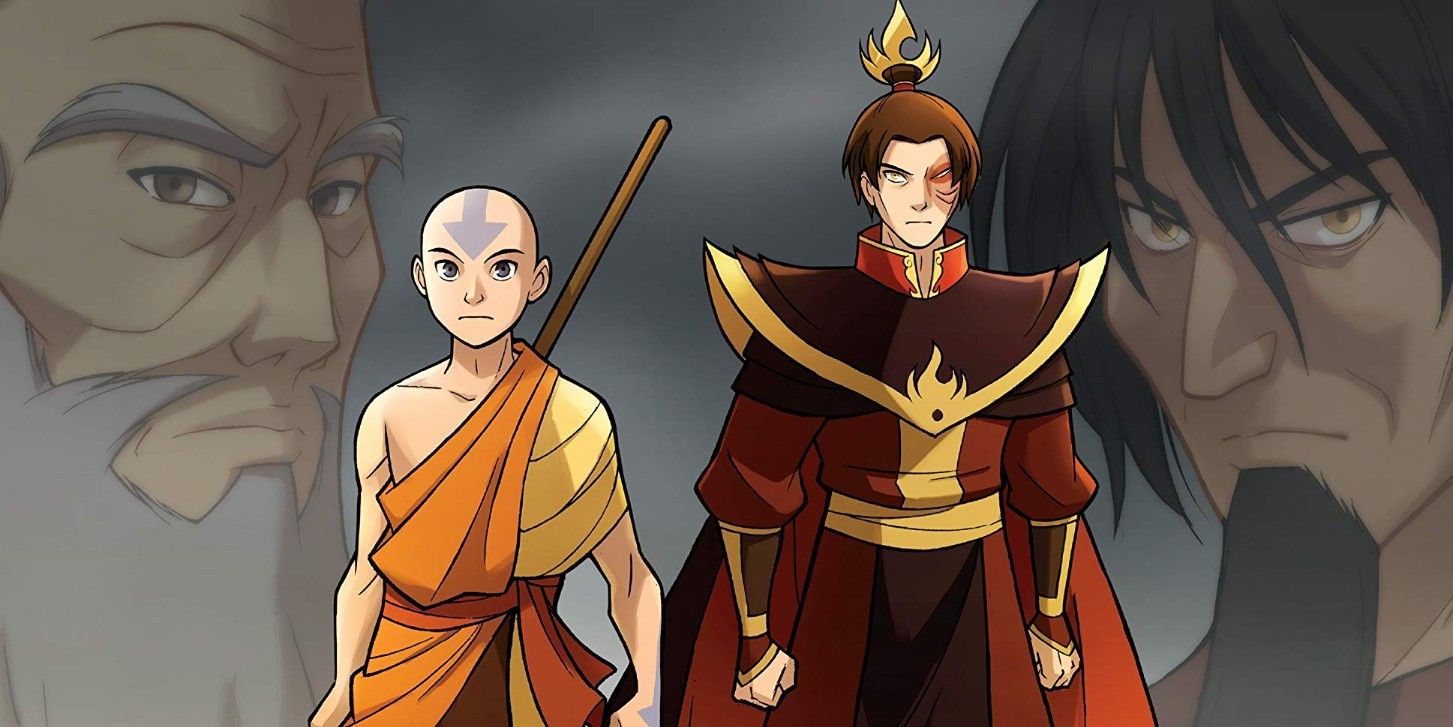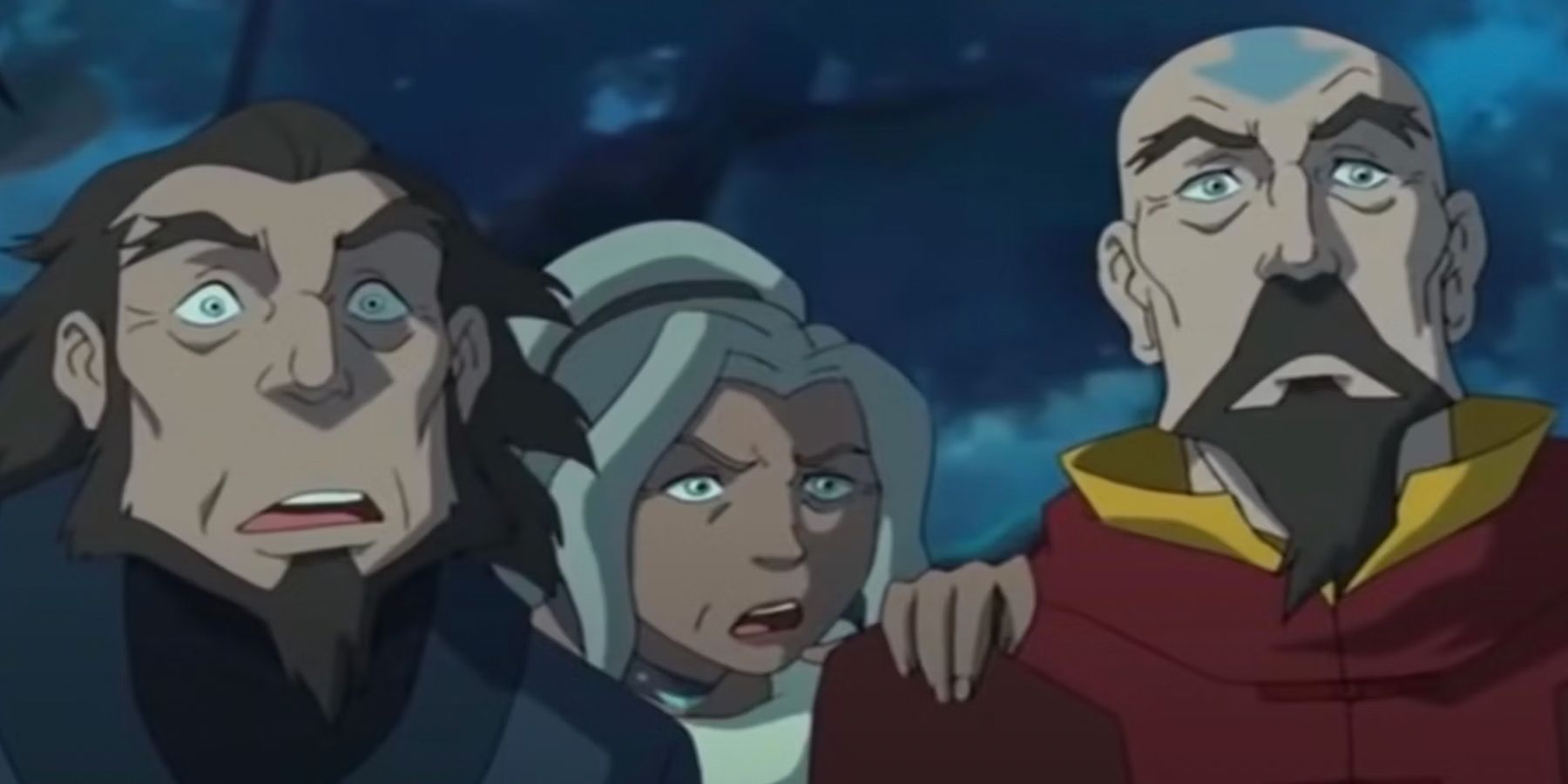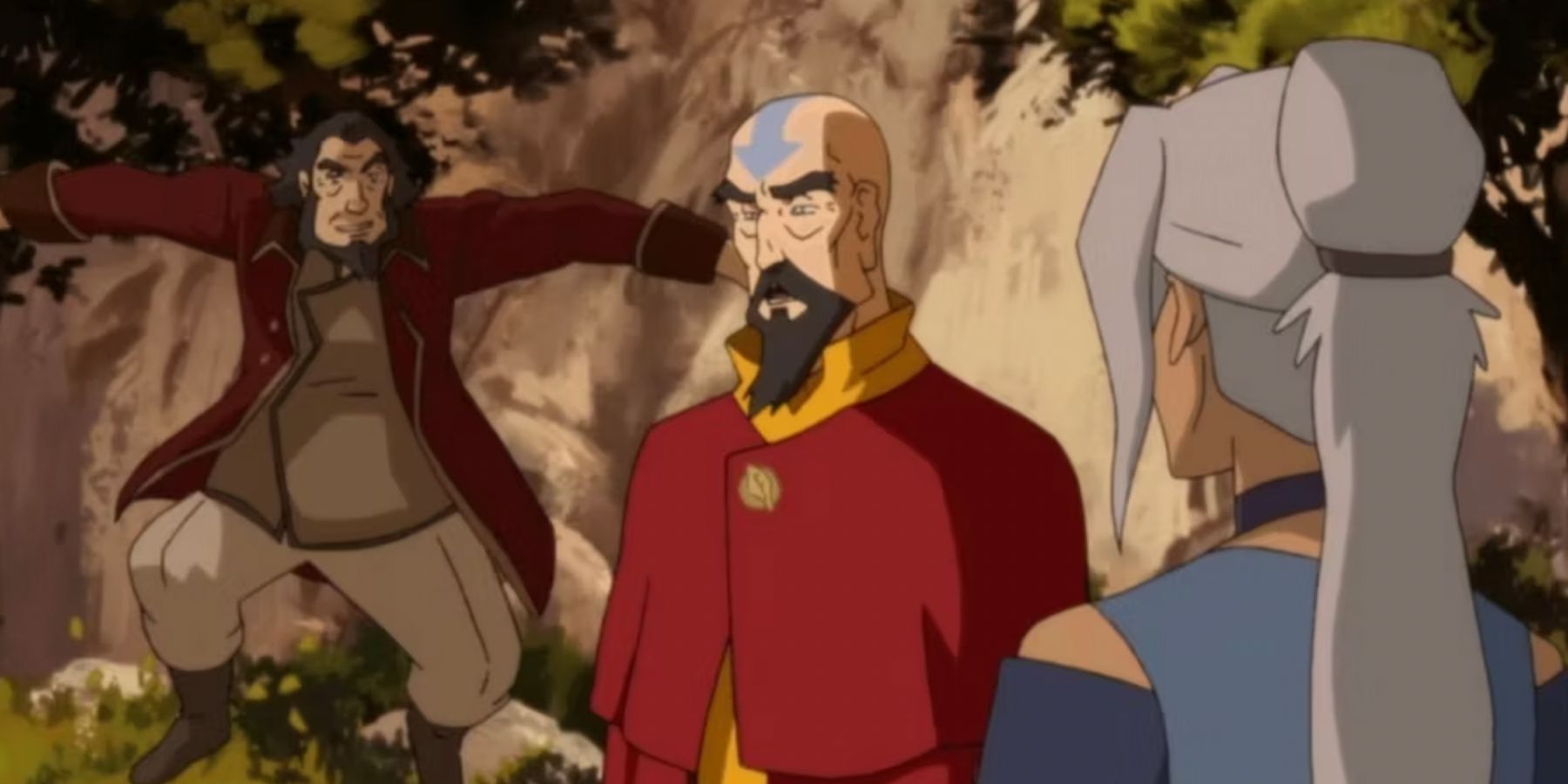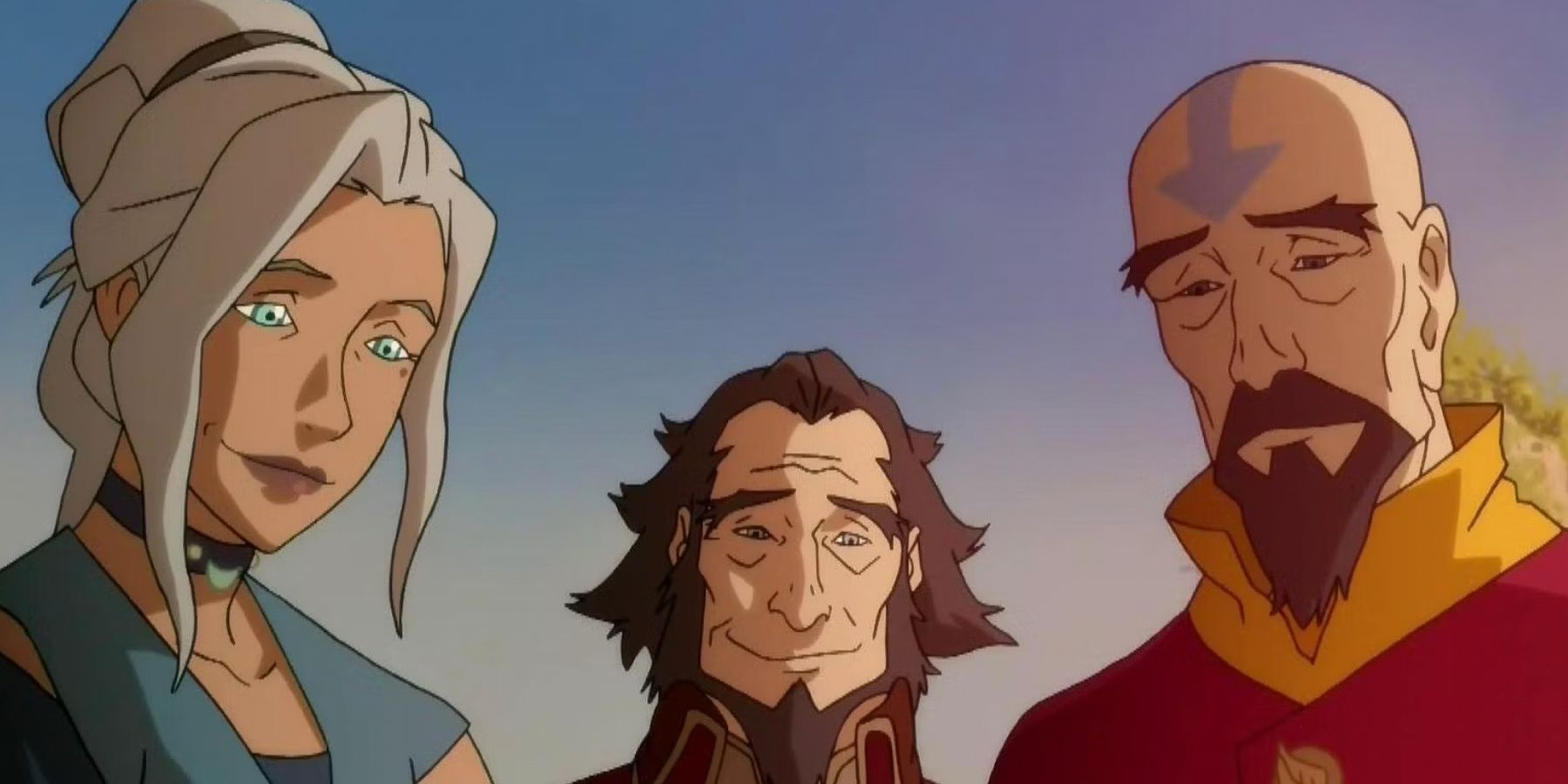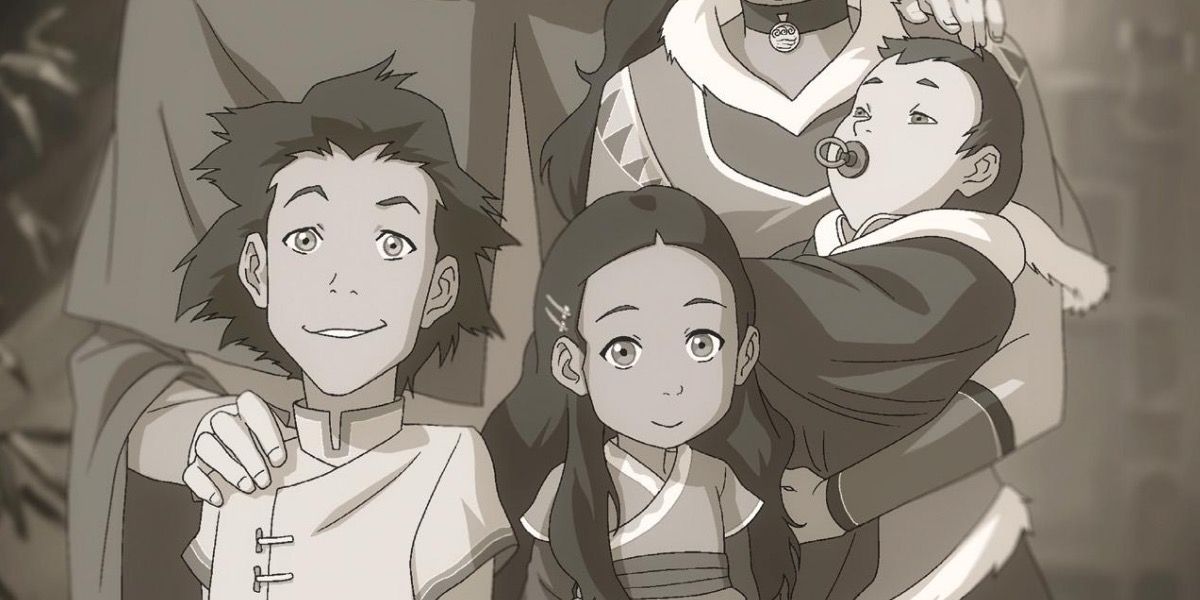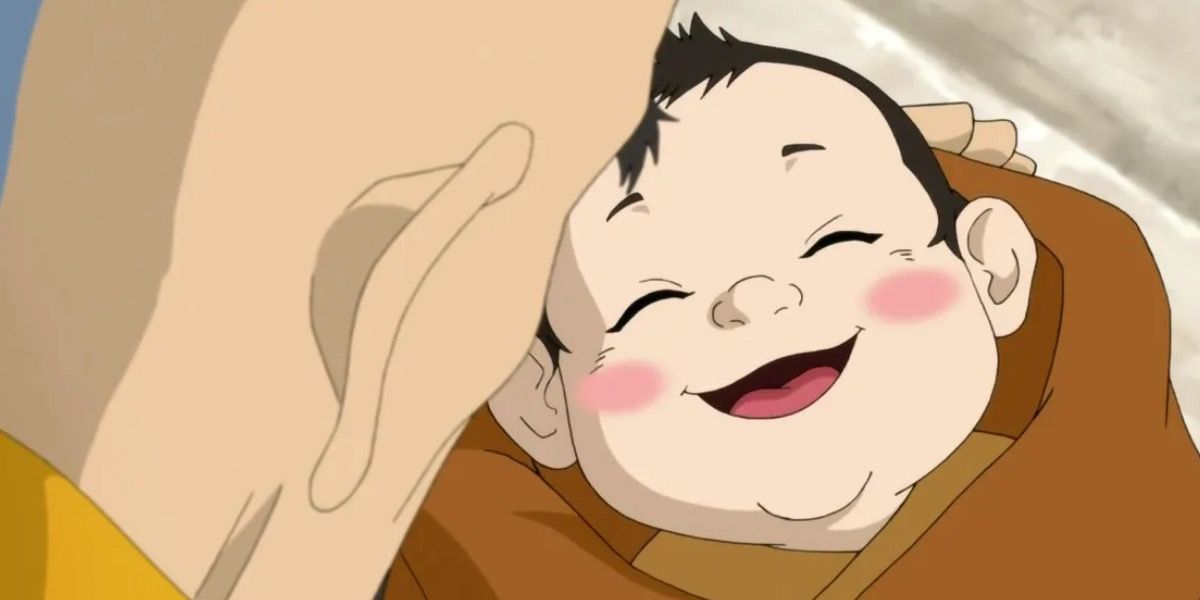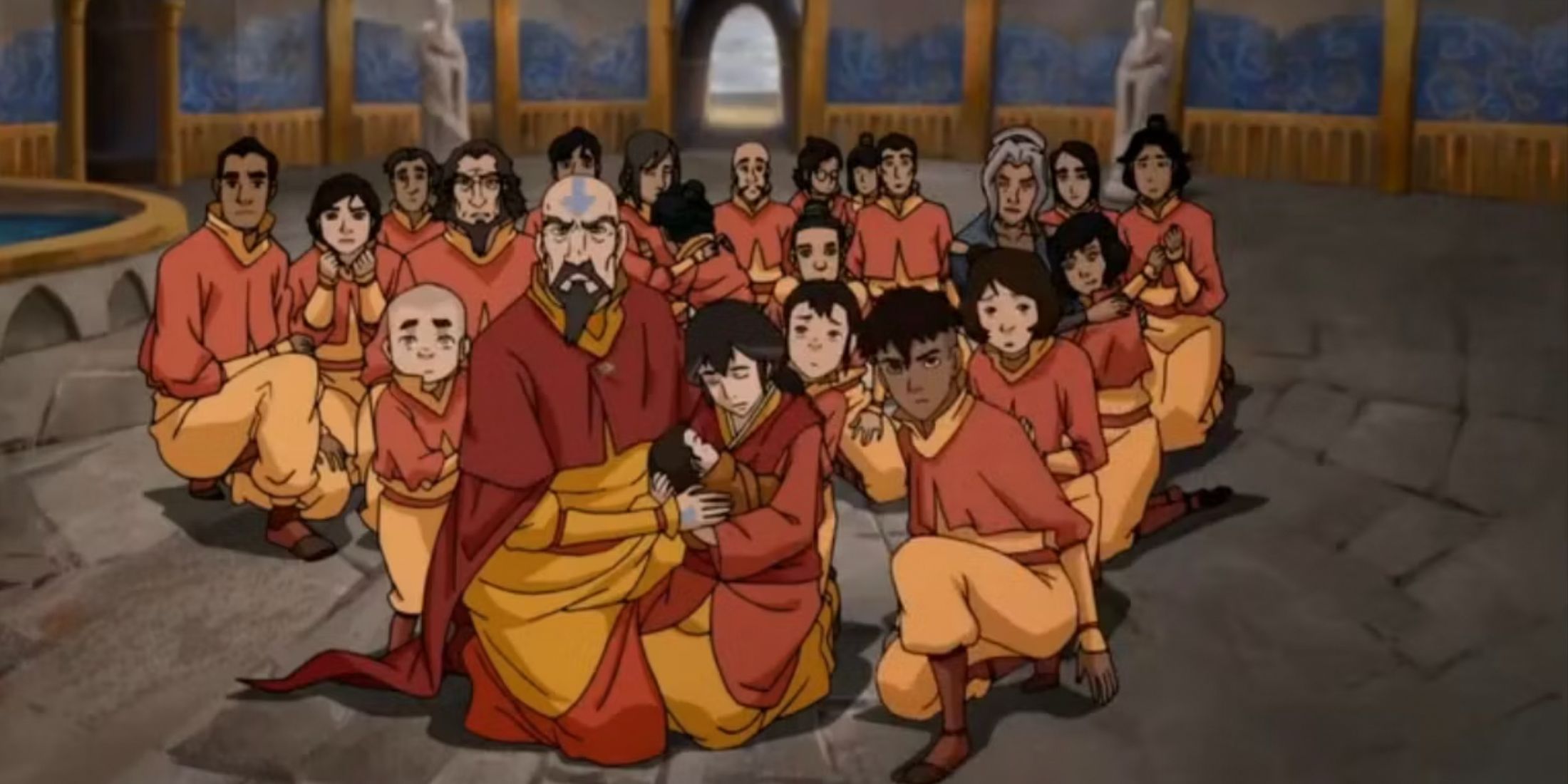Avatar: The Last Airbender’s series finale saw Aang defeat Fire Lord Ozai and and the Hundred Year War. Here’s what happened to him next.
![]()
Avatar: The Last Airbender‘s series finale concludes with Aang defeating Fire Lord Ozai and bringing an end to the Hundred Year War, but his story didn’t end there. Thanks to tie-in comics that pick up after the end of The Last Airbender season 3, as well as the presence of Aang’s descendants in The Legend of Korra, what happened to Aang after Avatar has been partially revealed. Much of Aang’s life force was drained after being frozen for so long, meaning he aged rapidly in his later years and died aged 66, before his grandchildren were born.
His wife, Katara, lived on for at least another 16 years after Aang died, as did Zuko and Toph. Aang was succeeded as the Avatar by Korra, a member of the Southern Water Tribe who is trained in the art of waterbending by Katara. Aang makes a few appearances in The Legend of Korra, both in flashbacks and appearing as a spirit guide to Korra. The Legend of Korra, as well as the tie-in comics, reveal what happened to Aang after the end of Avatar: The Last Airbender.
Aang Builds A New World
Aang Laid The Foundations For The World Seen In The Legend Of Korra
The main theme of the Avatar: The Last Airbender comics is change. In The Legend of Korra, which picks up 70 years after the events of the original series, the Four Nations have experienced major technological advancements and the world is barely recognizable. It is now roughly analogous to the 1920s of the real world, complete with cars, radios, and moving pictures. This world only exists thanks to what Aang did after The Last Airbender.
Aang plans with Earth King Kuei and Fire Lord Zuko to empty the Fire Nation colonies in the Earth Kingdom and return the Fire Nation citizens to their home country.
The comics show the roots of that world, starting with the very first trilogy, “The Promise.” In this story, Aang plans with Earth King Kuei and Fire Lord Zuko to empty the Fire Nation colonies in the Earth Kingdom and return the Fire Nation citizens to their home country. However, the so-called Harmony Restoration Movement proves to be somewhat less than harmonious.
When attempting to dismantle the oldest Fire Nation colony, in the city of Yu Dao, Aang meets fierce resistance from both the Earth Kingdom citizens and Fire Nation citizens who live there. In the hundred years since the colony was founded, members of both nations have formed a new kind of culture, where earthbenders and firebenders live alongside one another and mixed families have formed.
Many of those citizens who technically belong to the Fire Nation have never even been to their ancestral home, and have no intention of leaving Yu Dao to go and live there. Aang, Zuko and the Earth King eventually agree to leave Yu Dao as it is, marking the first step toward the establishment of the United Republic of Nations.
After bringing his friends to a meadow where he and the other Air Nomads used to hold a ceremony called Yangchen’s Festival, he discovers that a town has been built on top of it, and with it a refinery where innovative new machinery is being used to extract ore without the need for earthbending
That isn’t the only change that Aang has to contend with after The Last Airbender. After bringing his friends to a meadow where he and the other Air Nomads used to hold a ceremony called Yangchen’s Festival, he discovers a town has been built on top of it, and with it a refinery used to extract ore without the need for earthbending. Aang struggles with the loss of the unmarked beauty of the area, but the spirit of the Avatar Yangchen reassures him that she’s OK with the change. Cranefish Town becomes a sprawling city filled with refineries and factories.
By the time Legend of Korra begins, the Air Acolytes have rebuilt and populated the Air Temples and are keeping the culture and teachings of the Air Nomads alive.
The Avatar: The Last Airbender comics also show the origins of the Air Acolytes — nonbenders who nonetheless study and follow the ways of the Air Nomads and help to keep their culture alive. The Air Acolytes start out as a fan club for Aang, but he is horrified to see that some of them have given themselves airbending master tattoos, which Aang considers to be gross cultural appropriation.
The apologetic Air Acolytes rectify their mistake by wearing wraps to cover up their tattoos, and Aang agrees to teach them the ways of the Air Nomads. By the time Legend of Korra begins, the Air Acolytes have rebuilt and populated the Air Temples and are keeping the culture and teachings of the Air Nomads alive.
Aang’s Battle With The Bloodbender Yakone
One Of Aang’s Fiercest Battles Came After The Last Airbender
In The Legend of Korra season 1, Korra meditates on her past lives and relives a memory of a battle that Aang had when he was 40 years old. A powerful waterbender called Yakone, who had the unique ability to perform bloodbending without the aid of a full moon, had used his powers to become a crime boss in Republic City. Toph Beifong, then the city’s chief of police, asked Aang for his help to arrest Yakone.
He broke free by entering the Avatar State, and managed to trap Yakone so that he could be taken to prison
At the trial, when Yakone stood accused of the illegal act of bloodbending, he used the dark art to bloodbend everyone in the room (including Aang), creating an opening for his escape. Aang gave chase and caught up to Yakone, only to be subjected to a painful bloodbending once again. He broke free by entering the Avatar State, and managed to trap Yakone so that he could be taken to prison. Yakone’s sons later returned to Republic City to cause problems for Aang’s successor — but that’s another story.
Aang’s Children and Grandchildren
Tenzin, Kya, And Bumi Explained
Aang paid a lot more attention to Tenzin than his other two children, bringing him on trips with him around the world and training him to become an airbending master.
Aang and Katara stayed together until Aang’s death, and had three children: Tenzin, Kya, and Bumi. Kya was a waterbender, like her mother, and Bumi was a nonbender, which unfortunately meant that the burden of rebuilding the airbender civilization rested solely on the shoulders of Tenzin, Aang’s youngest son and the only airbender of the three.
Though he probably didn’t intend to, this meant that Aang paid a lot more attention to Tenzin than his other two children, bringing him on trips with him around the world and training him to become an airbending master. Of the three children, Tenzin is the one that most closely resembles Aang (mostly because of his bald head and airbender tattoos). Bumi, who was named after Aang’s childhood friend, grew up to become a naval commander, while Kya became a master healer.
